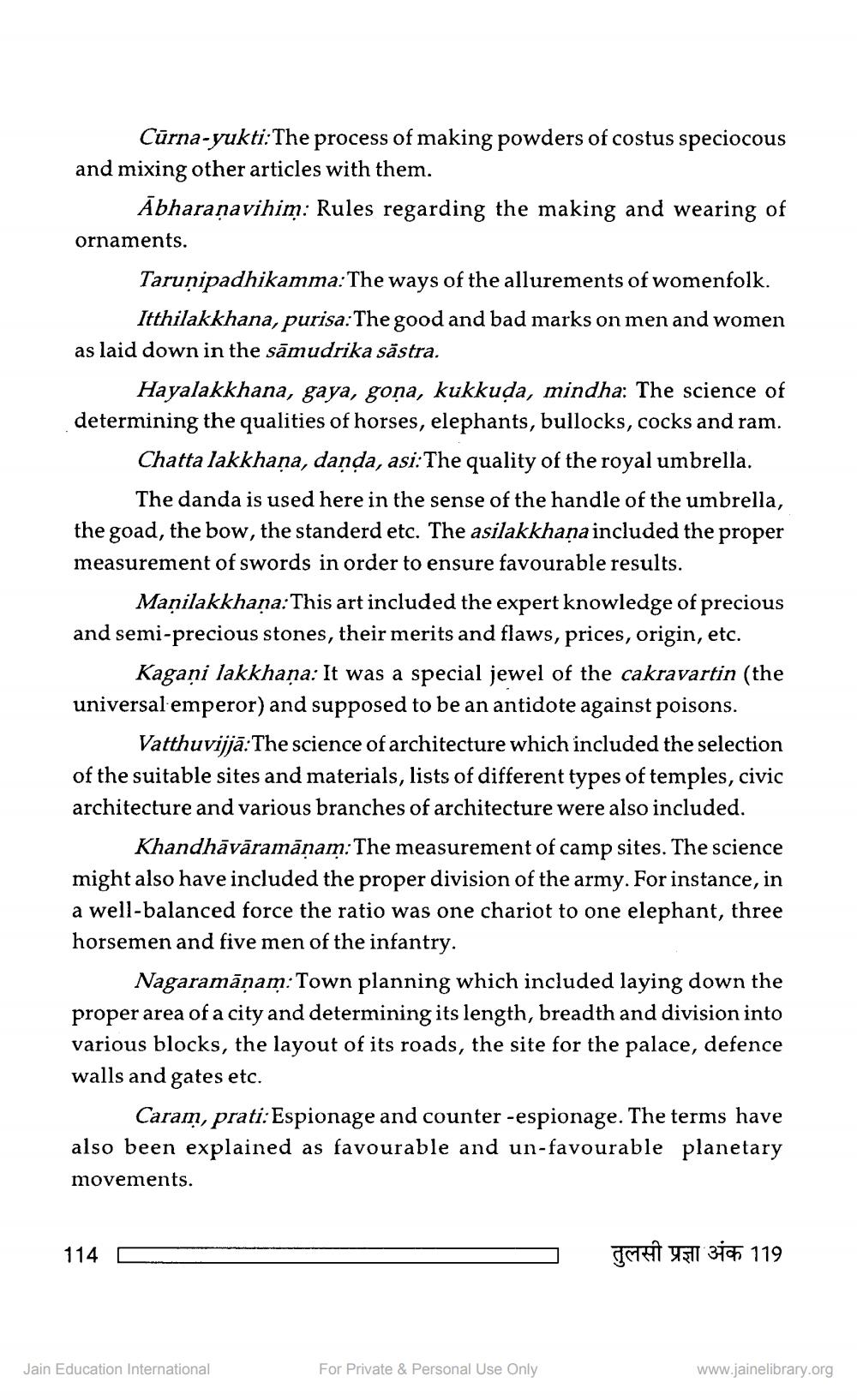________________
Cūrna-yukti:The] process of making powders of costus speciocous and mixing other articles with them.
Ābharaṇavihim: Rules regarding the making and wearing of
ornaments.
Tarunipadhikamma: The ways of the allurements of womenfolk. Itthilakkhana, purisa: The good and bad marks on men and women as laid down in the samudrika sästra.
Hayalakkhana, gaya, goṇa, kukkuda, mindha: The science of determining the qualities of horses, elephants, bullocks, cocks and ram. Chatta lakkhana, danda, asi: The quality of the royal umbrella.
The danda is used here in the sense of the handle of the umbrella, the goad, the bow, the standerd etc. The asilakkhaṇa included the proper measurement of swords in order to ensure favourable results.
Manilakkhana: This art included the expert knowledge of precious and semi-precious stones, their merits and flaws, prices, origin, etc.
Kagaņi lakkhana: It was a special jewel of the cakravartin (the universal emperor) and supposed to be an antidote against poisons.
Vatthuvijjā: The science of architecture which included the selection of the suitable sites and materials, lists of different types of temples, civic architecture and various branches of architecture were also included.
Khandhāvāramāṇam: The measurement of camp sites. The science might also have included the proper division of the army. For instance, in a well-balanced force the ratio was one chariot to one elephant, three horsemen and five men of the infantry.
Nagaramāṇam: Town planning which included laying down the proper area of a city and determining its length, breadth and division into various blocks, the layout of its roads, the site for the palace, defence walls and gates etc.
Caram, prati: Espionage and counter -espionage. The terms have also been explained as favourable and un-favourable planetary movements.
114
Jain Education International
For Private & Personal Use Only
तुलसी प्रज्ञा अंक 119
www.jainelibrary.org




